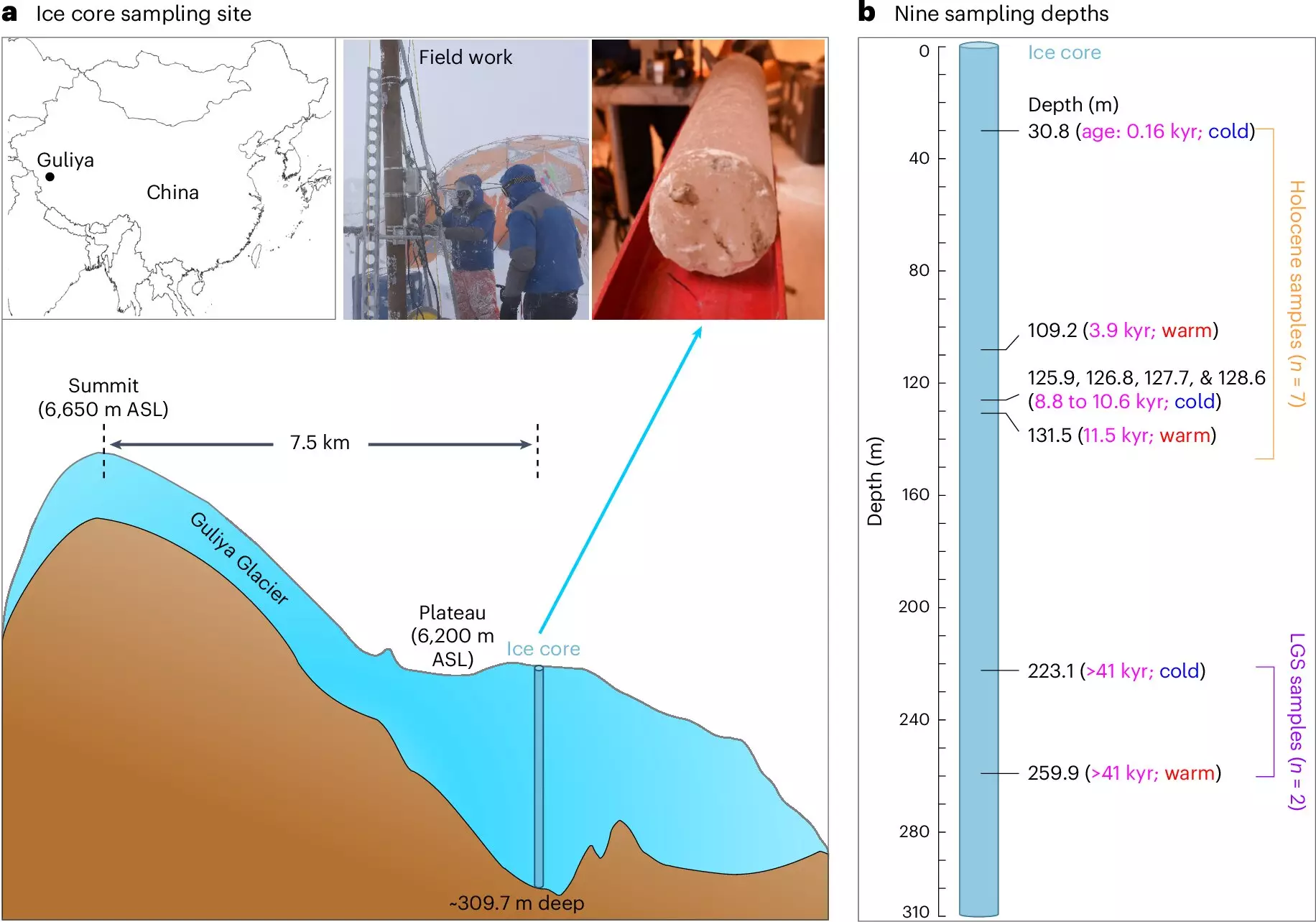Recent findings from the Guliya Glacier in the Tibetan Plateau underscore the profound interconnection between ancient viruses and climate changes spanning thousands of years. Scientists, led by microbiologist Dr. ZhiPing Zhong, have successfully extracted and analyzed ice core samples dating back more than 41,000 years. This research has unearthed nearly 1,700 distinct viral species, most of which are novel to science. The significance of these discoveries lies in understanding how these viruses likely shaped and interacted with their microbial hosts during dramatic climatic shifts, revealing intriguing insights into Earth’s historical climate dynamics.
The study represents a groundbreaking approach to assessing how ancient microbial life—specifically viruses—responded during critical periods, such as the transition from the Last Glacial Stage to the warming Holocene around 11,500 years ago. This crucial finding suggests revolutionary implications for how we interpret viral evolution in the context of climate change. By uncovering the evolutionary pathways of these viruses, the researchers illuminate connections that have been largely overlooked up to this point.
Drilling into glacial ice is no simple task; it requires specialized techniques to ensure that the ice layers are preserved without contamination. The Guliya Glacier, located at altitudes exceeding 20,000 feet, offers a unique repository of ancient organic material. Researchers employed an advanced sequencing technology to decode the genetic signatures of viruses embedded within the ice. This meticulous methodology allows scientists to reconstruct ancient ecosystems in a way that was previously infeasible, significantly enhancing the understanding of the biosphere during pivotal climatic epochs.
Of the viral species identified, it’s noteworthy that approximately 75% are new to science. This level of novelty not only broadens our understanding of Earth’s microbial history but also implies that significant adaptations occurred in response to climatic pressures. Given that the environment has warmed unprecedentedly in recent decades, drawing parallels between historical ecological responses and modern phenomena is increasingly crucial.
The insights gleaned from studying ancient viruses are manifold. Firstly, the findings contribute essential knowledge for contemporary virology and microbial ecology, providing crucial context in understanding how microbes responded to ecological stressors in the past. These ancient analogues could serve as models for predicting how current viruses might adapt as global temperatures rise and habitats shift. Moreover, the new revelations suggest that many ancient viruses may have been transported across vast distances, thus complicating our understanding of viral phylogeography.
As glaciers continue to melt due to climate change, the urgency to study glacial cores becomes apparent. The ongoing loss of these natural archives presents an irreversible challenge for future generations of scientists. The study emphasizes that the disappearance of glaciers not only represents a loss of historical climate data but also diminishes the opportunity to explore how various life forms have adapted to extreme environmental changes over millennia.
One of the noteworthy aspects of this study is the collaborative effort involving experts from various fields including microbiology, climate science, and geology. This interdisciplinary approach has fostered a rich environment for innovation, enabling new scientific inquiries that would not have been viable within traditional disciplinary confines. Matthew Sullivan, a co-author of the study, emphasized the importance of such collaborations in breaking down silos that often hinder scientific progress.
Furthermore, the study hints at the broader applications of these techniques in astrobiology. Understanding how viruses and microbes survive under extreme conditions on Earth could shed light on the potential for life in similarly inhospitable environments beyond our planet, such as the icy bodies in our solar system. The implications stretch far beyond Earth, inviting a fundamental reassessment of life’s resilience in altering climates.
The researchers implore the scientific community to prioritize these studies before the window of opportunity closes entirely. With the rapid loss of glacier ice, time is of the essence. The hope is that by emphasizing the importance of ancient viruses, they will inspire further research and innovation in methods for investigating life under changing environmental circumstances.
The research conducted on the Guliya Glacier signifies a pivotal moment in our understanding of how viruses and climate are intertwined. As we deepen our comprehension of ancient biological responses to climate change, we equip ourselves with knowledge that can perhaps guide us in the face of current and future ecological challenges. The past, it seems, holds the keys to navigating the precarious climate landscape of the present and future.

